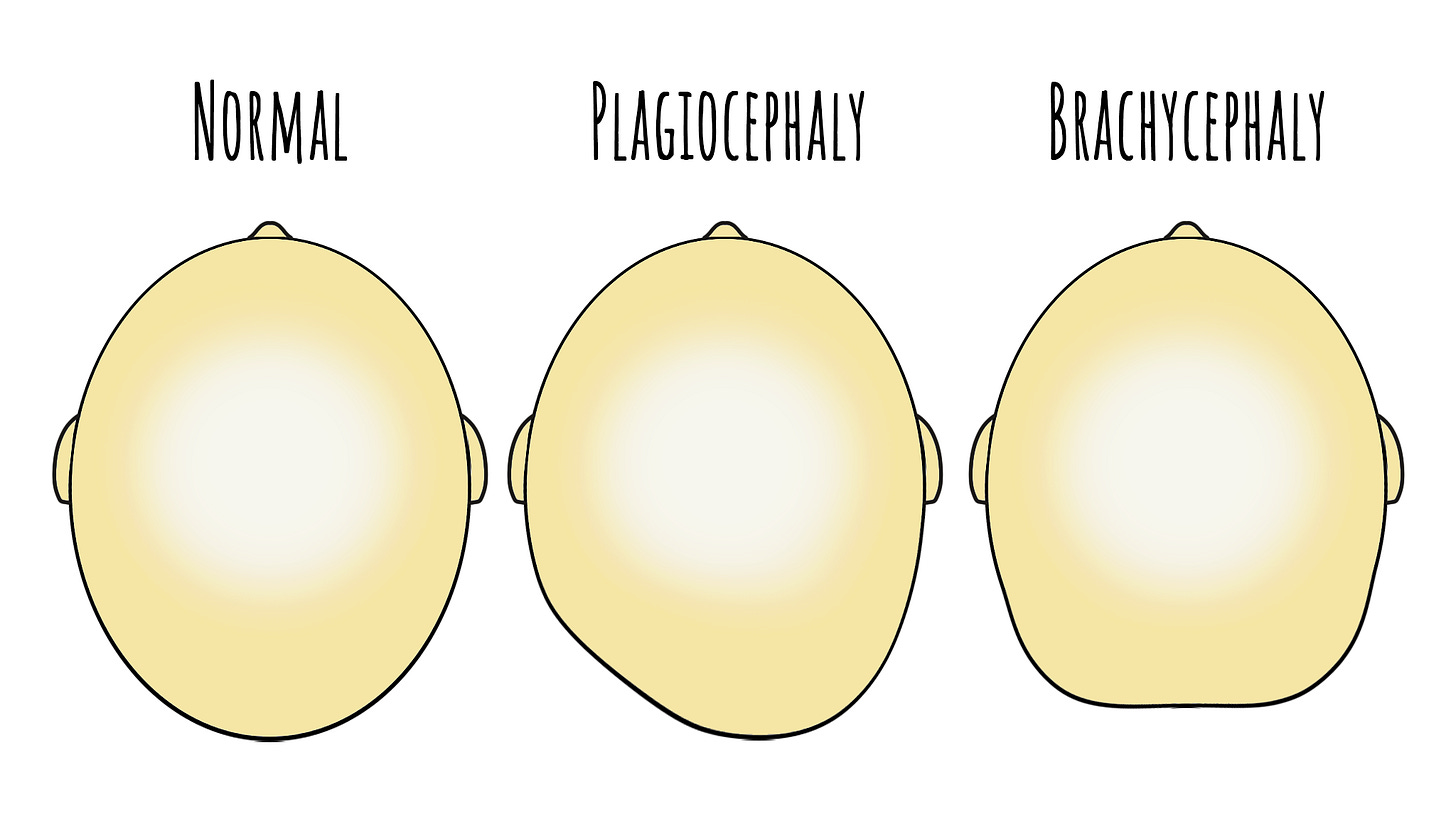Bringing home a newborn is an exciting (and often overwhelming) experience. You spend hours admiring their tiny fingers, button nose, and soft little head. But as the weeks go by, you might start to notice a slight flatness on one side or at the back of their head. This can naturally cause concern for parents. The good news is that in most cases, it’s a temporary cosmetic issue rather than a medical problem.
That said, because it’s such a common worry, there are plenty of products and treatments out there promising a quick fix, many of which come with a hefty price tag and little solid evidence to back them up. So, before you invest in special pillows, helmets, or other supposed solutions, it’s worth understanding what’s really happening and what simple, effective steps you can take to help your baby’s head develop naturally.
What Exactly Is “Flat Head Syndrome”?
Flat head syndrome is the common term used to refer to conditions called positional plagiocephaly and brachycephaly, which typically develop in those early months of life (and sometimes babies are born with flat head established already). Let’s define these big-sounding terms:
Plagiocephaly: The flattening appears on just one side of the back of the head. If you look down at your baby’s head from above, it might look like a bit of a parallelogram. The ear on that side can shift slightly forward, and you might see a bit of bulging at the forehead on the same side.
Brachycephaly: The flattening happens right at the back, causing the head to look wider. Sometimes the forehead can bulge out a bit to compensate.
In fact, about 1 in 5 babies have some level of this “flatness” with some reports stating that it can happen in up to 40% of babies. The best news here is that in almost all cases, it doesn’t hurt and doesn’t mess with your baby’s brain growth or development. It mostly comes down to how soft a newborn’s skull is, and soft things flatten when pressed against something firm (like a mattress).





